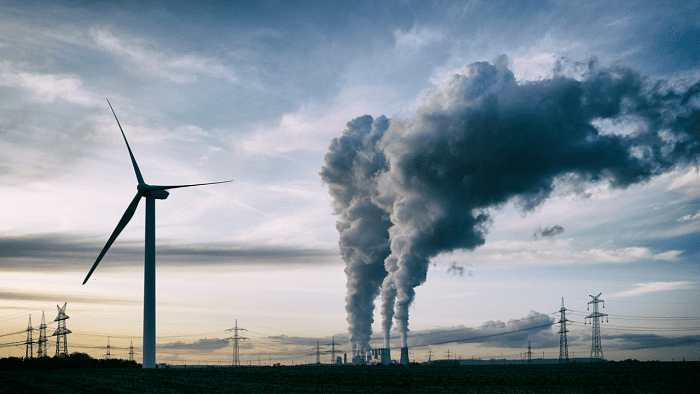
India has been projected as the fourth-biggest emitter of GHGs (greenhouse gases). However, it ranks 134th with respect to per capita emissions in the world. The recent G20 countries summit also emphasised carbon neutrality, or net zero emissions, by 2050. Being “carbon neutral” means that the quantity of carbon dioxide released into the environment by a country’s economy equals the amount offset through other means. India has kept a modest goal of attempting to become net carbon neutral by 2070.
According to the Reserve Bank of India’s report (2023), the goal of achieving carbon neutrality would require a reduction in energy intensity to 5% annually and an increase in consumption of green energy to 70% by 2070. It further states that the green financing requirements in India are at least 2.5% of GDP annually. However, with its large population and rapid economic growth, is achieving carbon neutrality a myth for India?
Achieving net neutrality won’t be an easy feat. Nevertheless, India has already announced 500 GW of non-fossil electricity capacity, half of its energy from renewable sources, a reduction of emissions by one billion metric tonnes, and an emissions intensity of the GDP of 45% by 2030. India is also a founding member of the International Solar Alliance.
In addition, Gujarat, Chhattisgarh, Maharashtra, and Karnataka are not planning to construct new coal-fired power plants and are also intending to decarbonize the Indian Railways by 2030. The use of green hydrogen is being encouraged in petroleum refineries, and businesses. However, this is easier said than done. India alone needs $1 trillion in climate finance to achieve net neutrality by 2070, but the developed world has pledged $100 billion per year for all developing countries.
Adding to the concerns, coal still accounts for more than 70% of India’s conventional power generation. Even batteries, though their capital costs have gone down by 80% during the last decade, cannot provide economically viable storage for more than four hours. Similarly, in the transportation sector, 90% is accounted for by road transport, which burns fossil fuels; our penetration of electric vehicles is minuscule.
One way India can reach net zero is by removing CO2 using carbon capture and storage (CCS) technology. CCS refers to capturing CO2 from point sources, transporting it to preselected locations, and storing it underground. CCS technology has been known since 1938 and was first installed in 1970 in the US with a capacity to remove 1.4 million metric tonnes (MT) of CO2 per year. Currently, 45 MT of CO2 are removed annually across the globe. According to NITI Aayog (2022), the overall storage capacity of CO2 in India is to the tune of 395–614 GT.
But CCS poses a Catch 22: developers of the technology will venture into the field when there is sufficient demand, and demand will only grow when costs are low. Only the government can break this impasse by investing in CCS technology, at least for a few demonstration units. The government of India has a large presence in the power sector, which in any case accounts for about 54% of the emissions, and, therefore, this is where the action should originate.
India’s pledge for net zero emissions by 2070 does not seem too ambitious; however, the road ahead is long and difficult. The dominance of coal-based power generation and the lack of adequate climate finance present significant obstacles. Furthermore, the penetration of electric vehicles remains minimal, and batteries cannot provide economically viable storage for extended periods. Carbon capture, storage, and utilisation can create many opportunities to convert the captured CO2 to value-added products such as green urea, and dry ice. The high cost of capturing carbon and the lack of sufficient demand hinder its adoption.
The journey towards net zero emissions is a collaborative effort, and India has rightly called upon the developed world to provide adequate climate finance.
(Dasani is a student, and Banerjee is an assistant professor at Christ University, Bengaluru)